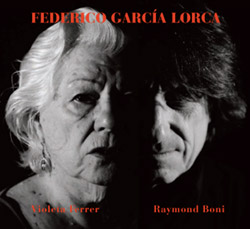
Raymond Boni performs on guitar and harmonica, using a fascinating set of approaches, for poems from Spanish poet and playwright Federico Garcia Lorca, chosen from Lorca's "Romancero Gitano" (Gypsy Ballads), and read with substantial depth by actress Violeta Ferrer.
In Stock
Quantity in Basket: None
Log In to use our Wish List
Shipping Weight: 3.00 units
Sample The Album:
Federico Garcia Lorca-text
Violeta Ferrer-voice
Raymond Boni-guitar, harmonica
Click an artist name above to see in-stock items for that artist.
Label: Fou Records
Catalog ID: FR-CD 02
Squidco Product Code: 23397
Format: CD
Condition: New
Released: 2013
Country: France
Packaging: Cardboard Gatefold
Recorded at studio Pyjama, in La Garenne-Colombes, France, on June 8th, 9th and 10th, 2011, by Jean-Marc Foussat.
"Federico García Lorca: Poet, playwright. Born on June 5, 1898, in Fuente Vaqueros, Spain. Considered one of Spain's greatest poets and dramatists, Lorca went to Madrid in 1919 where he entered the Residencia de Estudiantes, or residence of scholars. While at the residence, he met and befriended artist Salvador Dali around 1921. Dali would later design the scenery for the Barcelona production of Lorca's play Mariana Pineda (1927).
Lorca's two most successful poetry collections were Canciones (Songs), published in 1927, and Romancero gitano (the Gypsy Ballads), published in 1928. Romancero gitano was especially daring for the time with its exploration of sexual themes and made Lorca a celebrity in the literary world. In the 1930s, Lorca spent much of his time working on plays, including a folk drama trilogy Bodas de Sangre (Blood Wedding) in 1933, Yerma in 1934, and La Casa de Bernarda Alba (The House of Bernarda Alba) in 1936.
The Spanish Civil War broke out in 1936 and Lorca found himself caught in the middle of the conflict. He was shot without trial by supporters of General Francisco Franco on August 19 or 20, 1936, in Granada."-Biography.com
"Romancero Gitano (translated as Gypsy Ballads) is a poetry collection by Spanish writer Federico García Lorca, published in 1928. It is his best known book of poetry. It is composed of eighteen romances with subjects like the night, death, the sky, and the moon. All of the poems deal with the Romani people and their culture.
The work reflects the pains of a people who live on the margins of society and who feel persecuted by the representatives of authority and for their struggle against that authority. However, Garcia Lorca himself points out that his interest is focused not on describing a specific situation, but on the clash that occurs again and again between the forces encountered: in a poem that describes the struggle between the Civil Guard and the gypsies, he calls these sides "Roman" and "Carthaginian" to imply the permanence of the conflict."-Wikipedia
Artist Biographies
• Show Bio for Federico Garcia Lorca "Federico Garcia Lorca was a poet, playwright. Born on June 5, 1898, in Fuente Vaqueros, Spain. Considered one of Spain's greatest poets and dramatists, Lorca went to Madrid in 1919 where he entered the Residencia de Estudiantes, or residence of scholars. While at the residence, he met and befriended artist Salvador Dali around 1921. Dali would later design the scenery for the Barcelona production of Lorca's play Mariana Pineda (1927). Lorca's two most successful poetry collections were Canciones (Songs), published in 1927, and Romancero gitano (the Gypsy Ballads), published in 1928. Romancero gitano was especially daring for the time with its exploration of sexual themes and made Lorca a celebrity in the literary world. In the 1930s, Lorca spent much of his time working on plays, including a folk drama trilogy Bodas de Sangre (Blood Wedding) in 1933, Yerma in 1934, and La Casa de Bernarda Alba (The House of Bernarda Alba) in 1936. The Spanish Civil War broke out in 1936 and Lorca found himself caught in the middle of the conflict. He was shot without trial by supporters of General Francisco Franco on August 19 or 20, 1936, in Granada." ^ Hide Bio for Federico Garcia Lorca • Show Bio for Violeta Ferrer "Violeta Ferrer is an actress, known for Come Undone (2000), In Praise of Love (2001) and La beauté du monde (1999)." ^ Hide Bio for Violeta Ferrer • Show Bio for Raymond Boni "Influenced by musicians as diverse as Django Reinhardt and Cecil Taylor, French guitarist Raymond Boni has developed a unique and dazzling style derived from gypsy technique. After studying the piano and switching to the harmonica, Raymond Boni learned how to play the guitar with Gypsies living near his home. This empirical experience would leave a permanent imprint on Boni's approach to the instrument. In the early '60s, still a teenager, he decided to go study in London. Surrounded by a very diverse and creative musical environment, Boni decided to get serious about the guitar and to break from the musical framework of musical academia. Back in France, he settled in Paris where he was among the first French musicians to embrace free jazz and free improvisation. His first major collaboration was a long-lived duo he formed with guitarist Gérard Marais in 1973. In 1976, he joined the André Jaume/Gérard Siracusa duo and worked with saxophonist Claude Bernard. The latter was also responsible for allowing Boni to fulfill his ambition to compose for and perform with dancers. In 1978, he started a long relationship with Joe McPhee, which produced some stellar albums such as Old Eyes & Mysteries and Oleo & a Future Retrospective and a tour in the U.S. and Canada (1985). In 1981, Boni moved to Marseille where he was not able to perform as often as in Paris. As an alternative, he focused on writing and diversified his projects. In 1982, he met dancer and choreographer Geneviève Sorin and started to compose music for her company. Raymond Boni also continued to foster some old partnerships while developing new ones with accomplished artists such as Les Mistrals with British improvisers Terry Day and Max Eastley. In the '90s, the guitarist worked extensively with musicians from younger generations, most notably Claude Tchamitchian and Eric Echampard. Boni also multiplied collaborations with artists having a background other than jazz but a bent for improvisation. Another worthy project is Boni's Family with Sorin and son Bastien Boni, which honors his Gypsy legacy and capitalizes on his talented household. In 2001, Boni reunited with McPhee for an album, Voices & Dreams, and several concerts in the U.S. and Europe." ^ Hide Bio for Raymond Boni
7/1/2025
Have a better biography or biography source? Please Contact Us so that we can update this biography.
7/1/2025
Have a better biography or biography source? Please Contact Us so that we can update this biography.
7/1/2025
Have a better biography or biography source? Please Contact Us so that we can update this biography.
Track Listing:
1. La Guitarra 1:12
2. Malaguena 0:35
3. Cafe Cantante 0:46
4. Danza 0:43
5. Balcon 0:25
6. El Silencio 0:34
7. La Casada Infiel 2:08
8. Es Verdad 0:46
9. Despedida 1:08
10. Romance De La Luna Luna 2:10
11. Reyerta 1:57
12. Cancion Del Jinete (A) 1:03
13. Cancion Del Jinete (B) 1:12
14. Romance De La Pena Negra 2:08
15. Romance Sonambulo 4:49
16. San Gabriel 3:11
17. Prendimiento De Antonito El Camborio En El Camino De Sevilla 2:44
18. La Muerte De Antonito El Camborio 2:23
19. Romance De La Guardia Civil Espanola 5:06
Compositional Forms
Spoken Word
Guitarists, &c.
New in Compositional Music
Search for other titles on the label:
Fou Records.


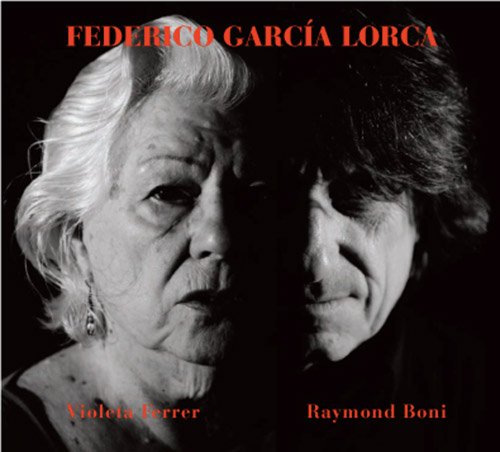
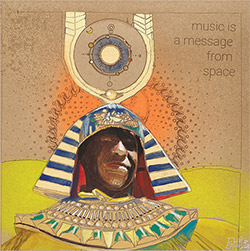


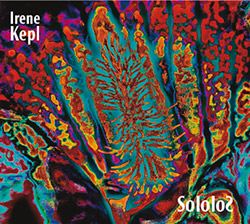

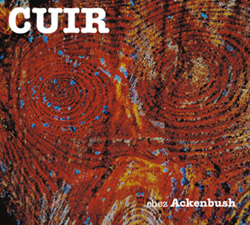
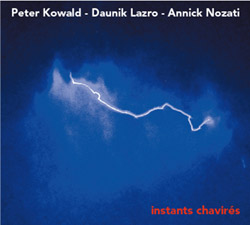
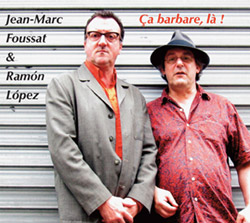
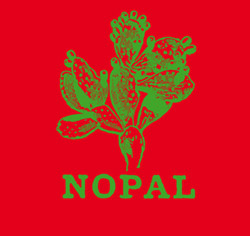

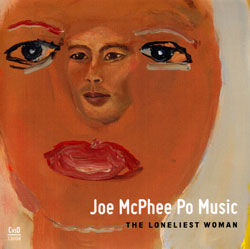













![Deupree, Jerome / Sylvie Courvoisier / Lester St. Louis / Joe Morris: Canyon [2 CDs]](https://www.teuthida.com/productImages/misc4/36404.jpg)


![Eternities: Rides Again [CASSETTE]](https://www.teuthida.com/productImages/misc4/36247.jpg)

![Lopez, Francisco: Untitled (2021-2022) [2 CDs]](https://www.teuthida.com/productImages/misc4/36438.jpg)




![Eventless Plot | Haarvol: The Subliminal Paths [CASSETTE + DOWNLOAD]](https://www.teuthida.com/productImages/misc4/36232.jpg)












![Eventless Plot | Francesco Covarino: Methexis [CASSETTE + DOWNLOAD]](https://www.teuthida.com/productImages/misc4/36231.jpg)



![Das B (Mazen Kerbaj / Mike Majkowski / Magda Mayas / Tony Buck): Love [VINYL]](https://www.teuthida.com/productImages/misc4/36329.jpg)


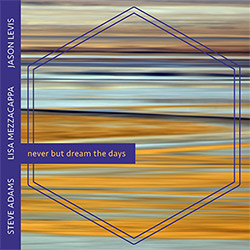
![Hemphill Stringtet, The: Plays the Music of Julius Hemphill [VINYL]](https://www.teuthida.com/productImages/misc4/36409.jpg)

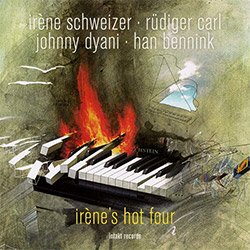

![Halvorson, Mary Septet: Illusionary Sea [2 LPS]](https://www.teuthida.com/productImages/misc4/17952.jpg)

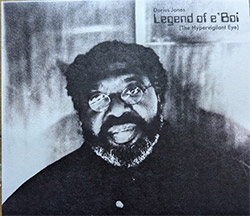




![Money : Money 2 [2 CDs]](https://www.teuthida.com/productImages/misc4/35894.jpg)




![Klinga, Erik: Elusive Shimmer [VINYL]](https://www.teuthida.com/productImages/misc4/36258.jpg)
![CHANGES TO blind (Phil Zampino): Volume 9 - I Wave on a Fine Vile Mist [CD + DOWNLOAD]](https://www.teuthida.com/productImages/misc4/36061.jpg)

![Wallmart / Rubbish: Asset Protection [split CD]](https://www.teuthida.com/productImages/misc4/35900.jpg)


![+Dog+: The Family Music Book Vol. 5 [2 CDs]](https://www.teuthida.com/productImages/misc4/35897.jpg)
![Kuvveti, Deli : Kuslar Soyledi [CASSETTE w/ DOWNLOAD]](https://www.teuthida.com/productImages/misc4/36107.jpg)

![Nakayama, Tetsuya: Edo Wan [CASSETTE w/ DOWNLOAD]](https://www.teuthida.com/productImages/misc4/36105.jpg)
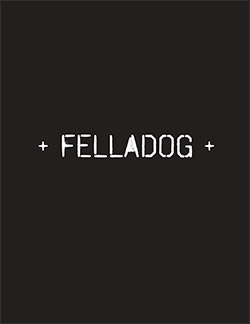
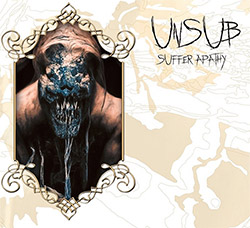


![Yiyuan, Liang / Li Daiguo: Sonic Talismans [VINYL]](https://www.teuthida.com/productImages/misc4/35957.jpg)
![Brown, Dan / Dan Reynolds: Live At The Grange Hall [unauthorized][CASSETTE]](https://www.teuthida.com/productImages/misc4/36245.jpg)








![Palestine, Charlemagne / Seppe Gebruers: Beyondddddd The Notessssss [VINYL]](https://www.teuthida.com/productImages/misc4/36206.jpg)
![Palestine, Charlemagne / Seppe Gebruers: Beyondddddd The Notessssss [NEON GREEN VINYL]](https://www.teuthida.com/productImages/misc4/36207.jpg)

![Laubrock, Ingrid: Purposing The Air [2 CDs]](https://www.teuthida.com/productImages/misc4/35639.jpg)

![Yoko, Ono / The Great Learning Orchestra: Selected Recordings From Grapefruit [2 CDs]](https://www.teuthida.com/productImages/misc4/35841.jpg)









![Zorn, John / JACK Quartet: The Complete String Quartets [2 CDs]](https://www.teuthida.com/productImages/misc4/35609.jpg)

![Lonsdale, Eden: Dawnings [2 CDs]](https://www.teuthida.com/productImages/misc4/35480.jpg)



![Sorry For Laughing (G. Whitlow / M. Bates / Dave-Id / E. Ka-Spel): Rain Flowers [2 CDS]](https://www.teuthida.com/productImages/misc4/35985.jpg)

![Rolando, Tommaso / Andy Moor : Biscotti [CASSETTE w/ DOWNLOADS]](https://www.teuthida.com/productImages/misc4/36106.jpg)


![Electric Bird Noise / Derek Roddy: 8-10-22 [CD EP]](https://www.teuthida.com/productImages/misc4/35970.jpg)








![Elephant9 : Mythical River [VINYL]](https://www.teuthida.com/productImages/misc4/34624.jpg)



![Elephant9 with Terje Rypdal: Catching Fire [VINYL 2 LPs]](https://www.teuthida.com/productImages/misc4/35355.jpg)
![Deerlady (Obomsawin, Mali / Magdalena Abrego): Greatest Hits [VINYL]](https://www.teuthida.com/productImages/misc4/34876.jpg)







![Surplus 1980: Illusion of Consistency [CD]](https://www.teuthida.com/productImages/misc4/35069.jpg)
![Staiano, Moe: Away Towards the Light [VINYL + DOWNLOAD]](https://www.teuthida.com/productImages/misc4/35037.jpg)
![Coley, Byron: Dating Tips for Touring Bands [VINYL]](https://www.teuthida.com/productImages/misc4/17906.jpg)

![Lost Kisses: My Life is Sad & Funny [DVD]](https://www.teuthida.com/productImages/misc4/lostKissesDVD.jpg)